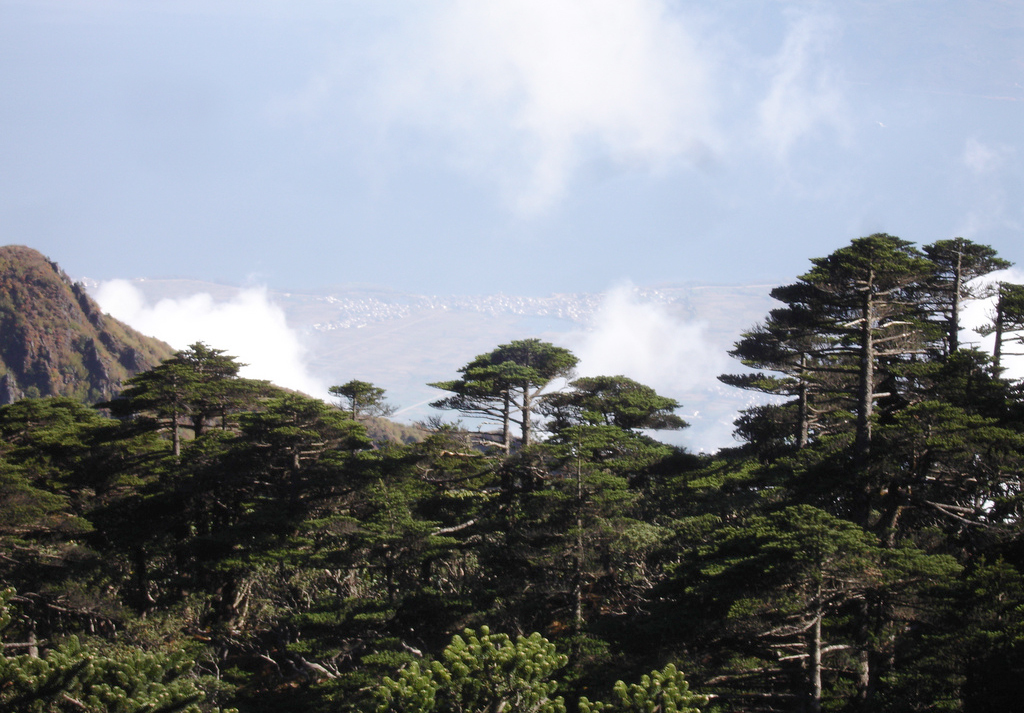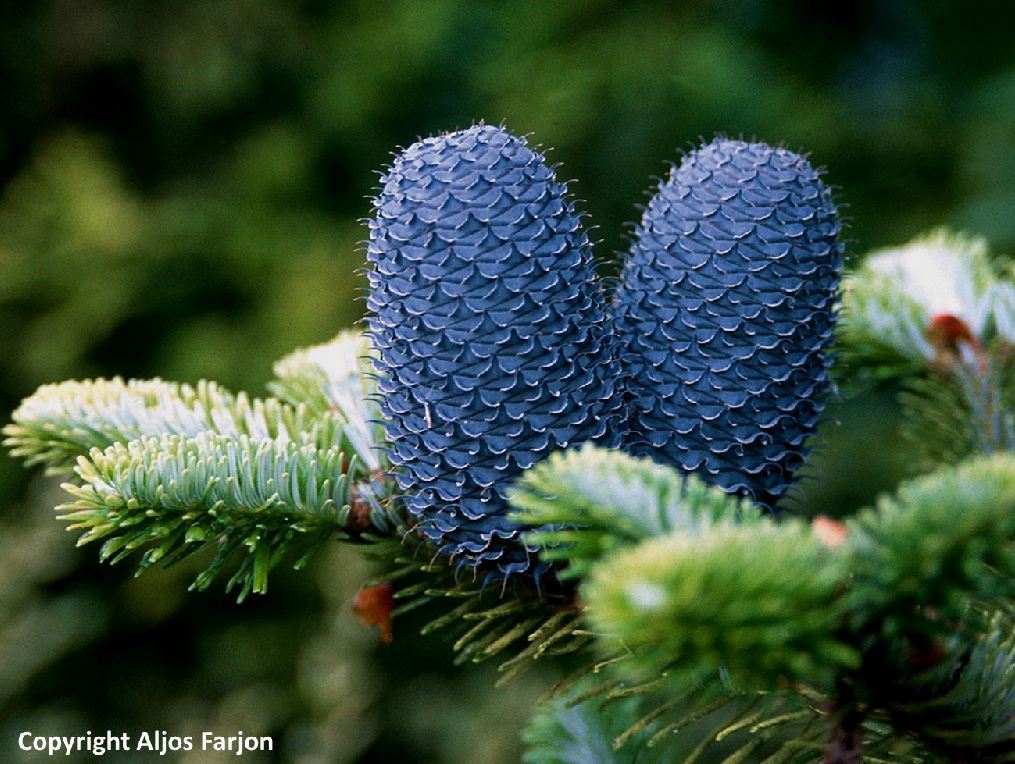Abies delavayi, as described in 1899 by Phillippe Édouard Léon van Tieghem and later by Adrien René Franchet, is commonly known as Delavay fir; or è‹Š±±Š†·æ‰ (cang shan leng shan) in the Chinese language. It was named for its discoverer, Father I.M. Delavay who collected it at 10,500 to 12,800 feet (3,500 - 4,000 m) elevation on Cangshan near Dali in Yunnan in April of 1887.
Description. Delavay fir is an evergreen coniferous species of tree, that grows to mature heights of 75 feet (25 m) tall, with a pyramidal crown.
Distribution. This species is native to India - Arunachal Pradesh, Myanmar, and Vietnam. In China, it can be found in Yunnan province and Tibet at 7,500 to 13,000 feet (2,400 - 4,300 m) of elevation. In India it is only known from a pure stand atop Piri Mountain, within the Balipara Frontier Tract. In Myanmar and Vietnam it occurs in the north, and its Chinese/Tibetan distribution is wide through the moist mountain forests of the Four Rivers country at 10,000 to 13,000 feet (3,000 - 4,300 m) of elevation and as such includes northwestern Yunnan and southeastern Xizang provinces/Tibet around the Lancang-Nukiang (Mekong-Salween) Divide. It prefers very wet climate (annual precipitation of 30 to 100 inches [1,000 - 3,000 mm]), with cool summers and cold winters (snow on the ground from October to April).

